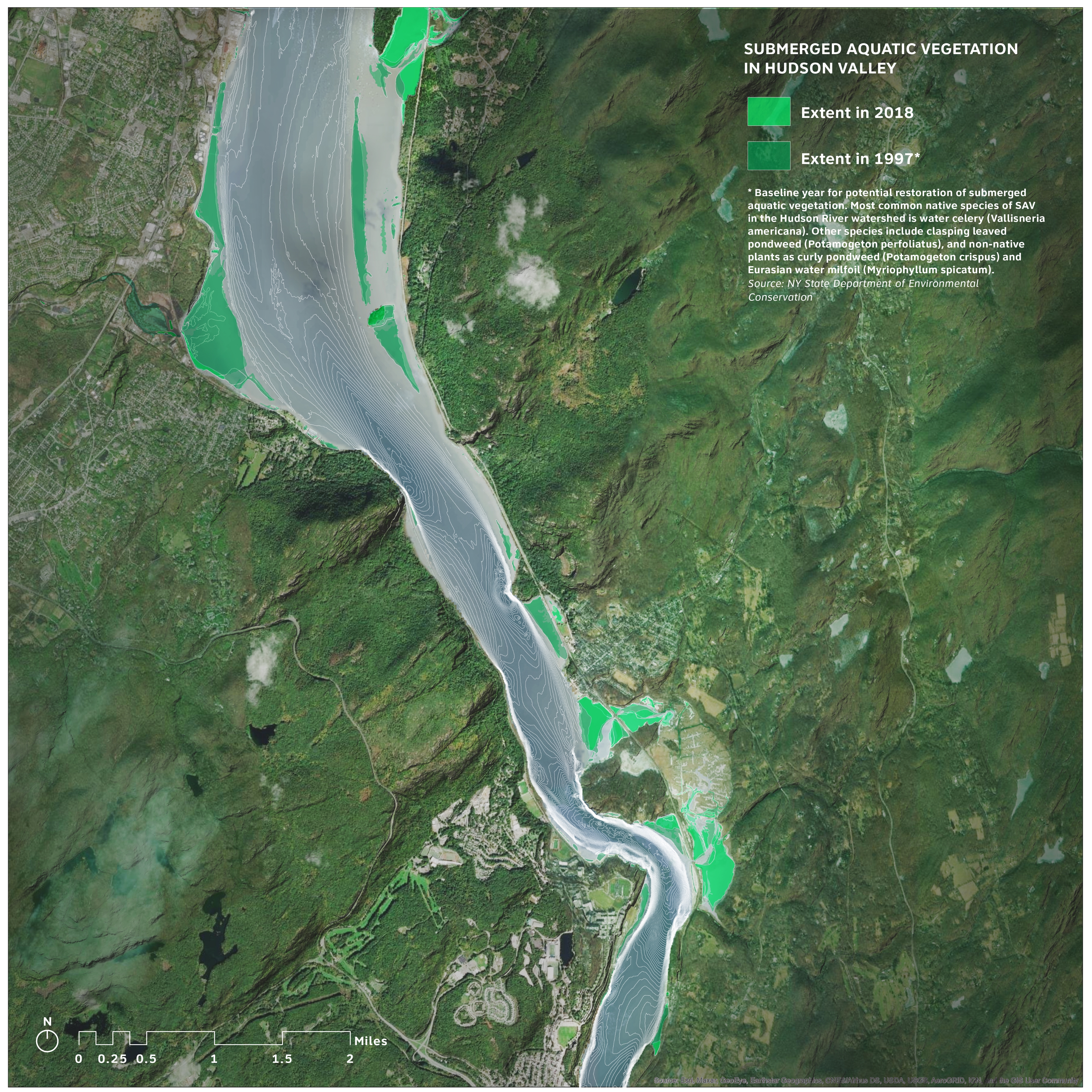Mapping Submerged Aquatic Vegetation
Hudson Valley
2021 Scape

Seagrasses play a large role in regulating ocean environments, storing more than twice as much carbon from planet-warming carbon dioxide (CO2) per square mile. However, human activity is helping destroy the equivalent of a soccer field of these seagrasses every 30 minutes around the world, according to the U.N. Environment Programme (UNEP). In the Hudson Valley, the last two decades have seen about a 30% decrease in the surface area of submerged aquatic vegetation, according to our study. New York State Department of Environmental Conservation attributes this decline to the sediment pulses from Hurricane Irene and Tropical Storm Lee, possibly inhibiting growth by burying stems and blocking light. Even with ongoing conservation efforts, climate risks are impacting these key aquatic habitats.
Ongoing restoration efforts play an important role in carbon sequestration (up to 1,000 tones of carbon dioxide sequestered per acre annually) and in creating habitats for juvenile fish that can hide within the leaves. Many tidal marshes and vegetated areas of the Hudson River are nurseries for young fish, habitats for macroinvertebrates, and food for waterfowl. Submerged aquatic vegeration, including the commonly found water celery (Vallisneria americana), is an important source of oxygen in the water in Hudson River and ecosystem health.
Ongoing restoration efforts play an important role in carbon sequestration (up to 1,000 tones of carbon dioxide sequestered per acre annually) and in creating habitats for juvenile fish that can hide within the leaves. Many tidal marshes and vegetated areas of the Hudson River are nurseries for young fish, habitats for macroinvertebrates, and food for waterfowl. Submerged aquatic vegeration, including the commonly found water celery (Vallisneria americana), is an important source of oxygen in the water in Hudson River and ecosystem health.